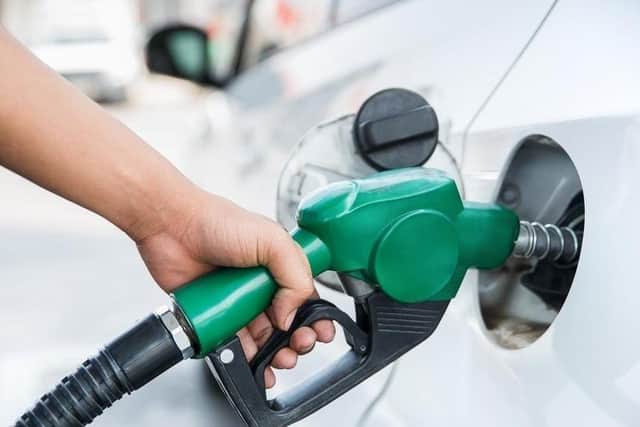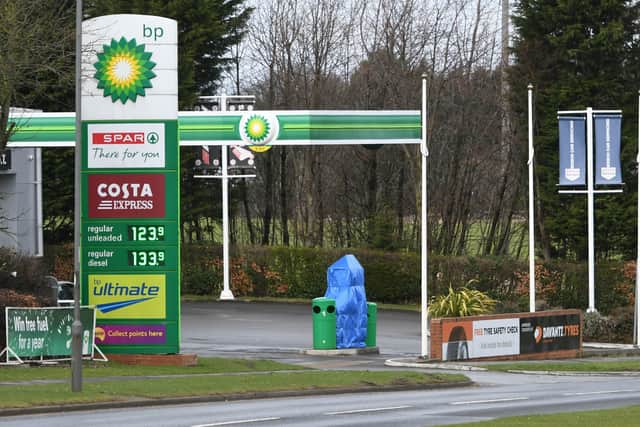What E10 fuel means for Yorkshire motorists at pumps – Richard Royal
If so, they might be wondering what this means and what difference it makes to their motoring from next week.
The ‘E’ in E10 represents ‘ethanol’, an alcohol which can also be used as a fuel, and was actually one of the first ever vehicle fuels, powering the Model-T Ford and other early cars, prior to the dominance of oil.
Advertisement
Hide AdAdvertisement
Hide AdEthanol can be made through the fermentation of sugars or starches such as those found in many plants, and is therefore often referred to as ‘Bioethanol’, a form of biofuel, reflecting its biological origin. This makes the fuel renewable, because it’s source can be regrown, and the growing process itself captures carbon dioxide from the atmosphere.


As such, renewable bioethanol is far better for the environment than fossil fuel oil, which releases both Climate Change-causing CO2 and air polluting carcinogenic substances such as ‘NOx’ which can have wider health impacts.
Yorkshire and North Lincolnshire is the epicentre of ‘feed wheat’ agriculture in the UK – a lower grade of wheat which wouldn’t be suitable for human consumption and often ends up in animal feed.
This wheat is also ideal for ethanol production, and creates a high-protein animal feed as a by-product too. As such, the industry is vital to thousands of farmers in the region, and two of Europe’s largest bioethanol plants are located in the Humber and Teesside.
Advertisement
Hide AdAdvertisement
Hide AdDue to its greener nature and support for domestic agriculture, many countries around the world have blended renewable bioethanol into petrol to lower vehicles’ overall emissions. The ‘10’ in E10 relates to the new percentage of ethanol blended into the petrol – 10 per cent. Despite transport contributing over a quarter of the UK’s carbon emissions, until this year it has only used E5, with only half the renewable content.


Displacing twice the fossil fuel content in most cars on the road is an important and positive step in the UK’s Climate Change ambitions, and a simple way for individuals to make a difference without any behavioural change. It’s the emissions-saving equivalent of taking 700,000 cars off the road – comparable to a traffic jam from Manchester to Moscow!
In Europe, Canada and Australia, E10 has been common for decades, whilst in USA it’s not uncommon to find E20+ at gas stations, particularly in the agricultural mid-west. Impressively, all cars in Brazil run almost entirely on ethanol, produced by its huge domestic sugar industry.
Meanwhile the Government has provided an easy-to-use online ‘E10 Vehicle Checker’ for motorists to search their vehicle’s ‘compatibility’ and this information should also be available at most fuelling stations, in vehicles’ manuals and inside fuel caps.
Advertisement
Hide AdAdvertisement
Hide AdAs a rule of thumb, if your vehicle was made after 2000, it is likely to be warrantied for E10 use.


There were also some questions over the slightly lower fuel density of ethanol, resulting in lower fuel economy and therefore potentially higher prices at the pumps. Studies have shown this to make less than one per cent difference to fuel economy, with other factors such as driving style or correctly inflated tyres make far more impact.
Many question the need for decarbonising petrol at all, given the planned acceleration towards electric vehicles, now due to be the only type on sale from 2030. Despite a considerable increase, pure electric vehicles still only account for eight per cent of new car sales.
With the average lifespan of a car being approximately 12 years, these sales need to be much higher if we’re serious about this change. Meanwhile, a third of new buyers opt for stepping-stone hybrid vehicles, which combine petrol or diesel engines with an occasionally-used electric motor.
Advertisement
Hide AdAdvertisement
Hide AdEven in the event of the UK meeting its ambitious 2030 target, transitional options are required. As long as there’s petrol-powered vehicles on the road, it makes sense to lower their emissions wherever possible.
So the next time you’re filling up at the petrol pump, take note of the E10 logo and know that you’re making a small contribution to improving our environment and supporting regional industries.
Richard Royal is managing director of Lionheart Public Affairs. He was previously Head of Government Affairs at Vivergo Fuels, the UK’s largest bioethanol producer.
Support The Yorkshire Post and become a subscriber today. Your subscription will help us to continue to bring quality news to the people of Yorkshire. In return, you’ll see fewer ads on site, get free access to our app and receive exclusive members-only offers. Click here to subscribe.
Comment Guidelines
National World encourages reader discussion on our stories. User feedback, insights and back-and-forth exchanges add a rich layer of context to reporting. Please review our Community Guidelines before commenting.